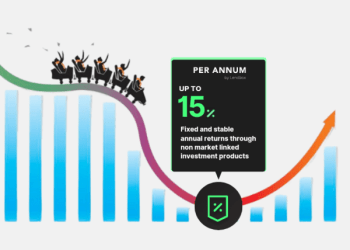
Democratisation of Fixed Income Investment in India
The nationalisation of life insurance in India in 1956 was a phenomenon marked by the establishment of the Life Insurance Corporation of India (LIC). Over 200 private insurers were absorbed under one umbrella (LIC), with a vision to protect the economically vulnerable sections of society by making life insurance accessible and more affordable. In the absence of technology, it was the stunning effort and persistence of the LIC agents who went into the nooks and crannies of the country to educate the unaware on the importance of life insurance, and over time (3 decades) normalised spending on life insurance. Today, LIC India, in spite of the re-entry of private players stands tall with over 28 crore policyholders and life funds of worth ₹34.3 lakh crore.
This has been a crucial engine in India’s nation-building story and fuelling economic growth. It merits to say that this, if applied to the arena of fixed income investments, can go a long way in democratising access to fixed income securities, and enabling an equitable opportunity for steady and predictable wealth creation for all. Today, the penetration of fixed income instruments remains limited to large national wealth partners or financial advisors, and the smaller players (typically 1-2 member operations) tend to restrict themselves to mutual funds and fixed deposits for their clients.
Between March 2020 and May 2022, India’s income and debt-oriented mutual fund schemes saw net outflows of ₹1.5 lakh crores. Whereas direct retail investments into government bonds have been made operationally easier now, while the net flows remain negligible. In fact, as of March 2022, the assets under management (AUM) of mutual funds stood at ₹38 lakh crore.
Fixed income securities provide secured options across the rating and yield spectrum depending on the investor appetite. The reason fixed income assets are not offered as part of the investment portfolio primarily stems from lack of awareness, bandwidth and operational capabilities such as access to bond options to make real-time offers on issuances, making allocations, and securely tracking investments.
Why fixed income?
Fixed income securities provide a compelling case to earn real returns while being rated, secured, and stable in dynamic markets that are prone to fluctuations. Recent reduction in face value also ensures that listed corporate debt becomes comparable to other low ticket investment options with improved secondary market liquidity. Improvement in the secondary market liquidity from retail investors will see greater bond adoption and thus, truly democratise fixed income in the long-term.
Technology – the modern day ‘LIC agent’
The LIC India story is an important lesson in the power of information, and its effective dissemination through agents. Today, with the power of technology, and its penetration into the remotest parts of the nation, it has become that much easier to arm people with information. With technology enabled platforms on the rise, it has become possible to increase literacy around fixed income instruments among smaller partners, giving them access to a greater range of secured options that they can showcase to their clients, to beat inflation, especially in the current environment.
The flow of information occurs on two levels: (a) smaller financial intermediaries gain more awareness about the options available to them, and are given the necessary understanding or rationale behind making investment decisions, and (b) the intermediaries are subsequently able to transfer this knowledge to their clients, and help them diversify their investment portfolio, and effect greater earnings in the long run. Above all, the regulatory clarity around online bond platforms comes as a blessing, as it will fuel faster adoption of fixed income securities in India. In short, if mounted on a robust tech-infrastructure, a straight line can be drawn between democratisation of fixed income securities, enhanced financial inclusion, and economic growth.
Source / Credits / Reference: Times of IndiaRef URL: shorturl.at/nwBFY
Back to blogs
Blog Views : 432 15-01-2023

